Midwest Architecture Community Collaboration Track Speakers
MACC CONFERENCE
People, process and technology will drive the effort to transform an organization from its current state to one that is flexible, agile and efficient. New disruptive technologies must be assessed and architectural processes must change affecting all of the architectural disciplines required to deliver projects. How does the architect know what disruptive technologies are appropriate for use in the enterprise? Business strategy and innovation strategies must be aligned in order to develop an appropriate architecture strategy. This conference will provide insights into disruptive technologies and architecture processes to align business, innovation and architecture strategies.
The 2018 MACC Conference will be held on November 7 – 8, 2018 at the Doubletree Hotel Park Place Minneapolis hotel.
The conference will be the same format as prior years with a Workshop the first day and conference sessions that second day. The Conference title is, “Scaling Disruptive Technologies – Moving from Innovation to Enterprise Transformation” and includes five (5) track sessions of four (4) speakers each. Session tracks are:
1) I Human – Human part of the digital transformation and innovation
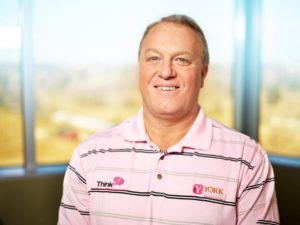 Richard Walker
Richard Walker
Richard Walker, is CEO and co-founder of York Solutions and is arguably one of the most connected IT executives in the Twin Cities area. York provides cutting-edge workforce solutions to help organizations use disruptive technologies to transform and achieve business, technology and operational goals.
In 2009, Richard Walker founded Think IT, a professional association with the overall mission to be fostering professional growth and development through the power of networking and collaboration. The group currently caters to over 3,000 IT professionals within the Twin Cities.
Link to Presentation : Are you winning the war on the IT Talent
The IT industry is always changing and always growing. As we continue to grow, it becomes harder and harder to retain the talent we already have. Our Tink IT organization has had plenty of meetings surrounding the topic of IT Talent. I would like to capture what things we as leaders and organizations can do, to gain confidence and understanding that our employees will stick around for s substantial amount of time. First, by showing a video and talking about what motivates us individuals and how can we reflect that onto people within our own organizations. Some questions that come mind, may bring to the group include:
- how do you promote your companies’ brand?
- why should a talented professional work for your company when there are dozen of others out there who also want them?
- what is your strategy to build large teams of technical resources?
I am looking forward to this opportunity!
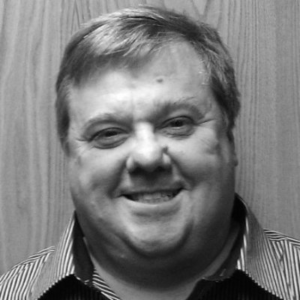 Paul Selway
Paul Selway
A Salesforce CRM architect passionate about enabling customer success with simplified solutions that accelerate business performance by using industry leading low code cloud platforms for scalable innovation. Certified Salesforce System Administrator, App Builder, Sales Cloud Consultant, Service Cloud Consultant. MBA focused on strategy, process improvement, and success measurement.
Link to Presentation : Democratizing Artificial Intelligence using a scalable low code CRM platform
Artificial intelligence (AI) for CRM is now a reality. I will illustrate this by demonstrating Salesforce Einstein AI. It allows all Salesforce users, not just data scientists, to surface predictions directly in the context of their business. With as little friction as possible, Salesforce Einstein discovers your company’s most important business insights, predicts what will happen next, recommends the next best action to take, and ultimately automates certain tasks to free up your users’ time. Powered by advanced machine learning, deep learning, predictive analytics, natural language processing, and smart data discovery, it allows your company’s customer processes, workflows, and interactions to become instantly become smarter and more predictive. This AI innovation is in a highly scalable on the Salesforce low code cloud platform.
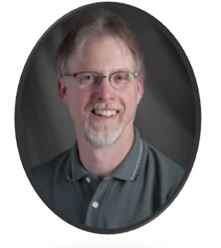 Joe Perzel
Joe Perzel
Joe Perzel has been leading projects of all sizes and managing staffs since 1982 in both a corporate and vendor capacity. He has a background in multiple industries including healthcare, insurance, finance, government, non-profit, K12 and higher education, audit and compliance, manufacturing and agri-business. Presently Joe is Partner JPerzel Inc. as well as Program Manager at Surescripts LLC. He has also held leadership positions at Cargill, MN Workers Compensation Insurers Agency, Thomson Reuters and International Multifoods.
Joe has been presenting since 2002 on topics ranging from project management, leadership, strategy, sales, career management and entrepreneurship. Most recently he has been the keynote at the Rochester CTC Leadership conference, Manitoba PMI PDD, Central Arkansas PDD, as well as presented to PMI-MN, PMI International, PMI (Atlanta, Delaware Valley, Dallas, Heartland, Mile High), IIBA, MN State Symposium, St Cloud State University and the University of St Thomas.
Link to Presentation : The Dark Arts of Project Management
Successful journey from start to finish of a project is not linear, clean, forecastable or easy. Your interest is to deliver the project on time, on budget with a smile on everyone’s face, but others have conflicting interests.
Armed with your System Development Life Cycle (SDLC), a planning tool of your choice and the innocence that always comes at the start of a project you think you are set to go. Then the plan that you have worked so hard to perfect shows a flaw, falls behind schedule or budget, gets amended or completely thrown out altogether. How you minimize these occurrences and provide the best chance to survive the project intact.
This presentation will start with the Top 10 Keys to Success which include Communicate, Communicate, Communicate; Managing Change and Expectations; Pace, Perfection and Price – pick 3? We will then discuss how to become a Master Magician covering topics such as Winning at Politics; Control outcomes through Influence; Communicate & Motivate and why you need to Market the Project.
While it takes less than 8 hours to learn how to use a tool to manage a project it takes a lifetime to learn the art of successfully running a project. This presentation will focus on the Soft-side of project management, having fun with the topic and using audience participation and exercises to share the community’s intelligence.
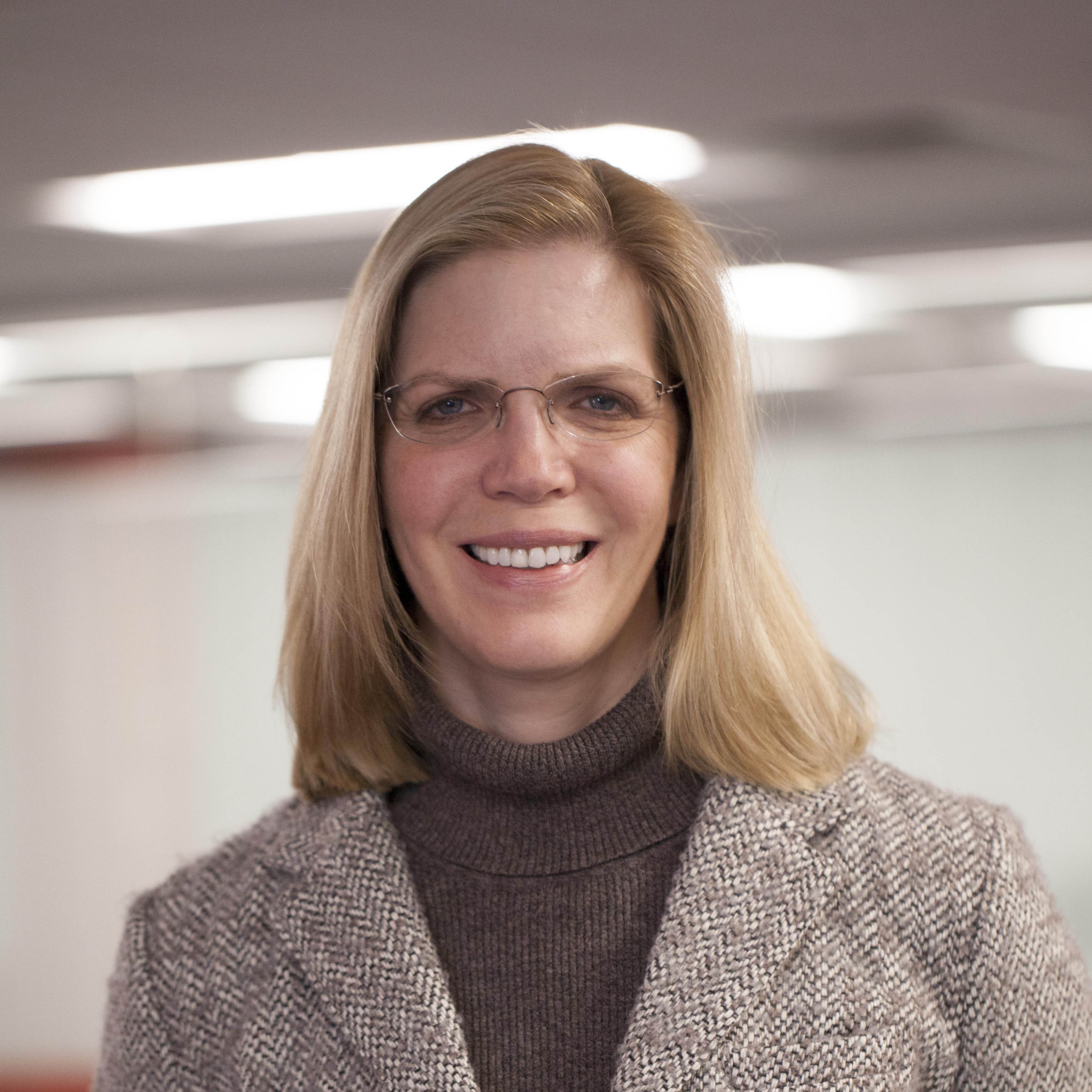 Ann McCrackin
Ann McCrackin
Ann McCrackin is Black Hills IP’s President as well as a patent prosecution process expert and a highly accomplished patent attorney with extensive experience in both U.S. and international patent prosecution. Before becoming President of Black Hills IP Ann was a Professor of Law and the Director of the nationally recognized Patent Prosecution and Procedure Program at Franklin Pierce Law Center (now the University of New Hampshire School of Law). At Franklin Pierce, Ann directed the program and taught courses in advanced aspects of practice before the United States Patent and Trademark Office. Ann has also taught dozens of continuing legal education courses and seminars on various aspects of patent process and prosecution and has edited and authored a number of legal texts on patent law. Ann is also attorney of record for several Amicus Briefs filed in patent cases before the U.S. Supreme Court and the Court of Appeals for the Federal Circuit. Ann was a Shareholder at the Minneapolis patent firm Schwegman, Lundberg & Woessner, P.A. for eight years and now is of counsel at the firm. Ann has an undergraduate degree from Iowa State University and a law degree from Franklin Pierce Law Center.
Session Title: Automation and Artificial Intelligence Alleviating Process Bottlenecks in the Legal IP Process
Black Hills IP is a company that was borne out of industry looking for more accurate, price-sensitive and faster ways to automate the docketing process in the patent persecution legal realm. Understanding and deconstructing the processes that are better served by artificial intelligence and what processes are better served by legal experts created a system of optimal man and machine hybrid management system, or machine-guided docketing services. In a short 5 years, Fortune 50 companies are leveraging this technology and system to apply for patents and manage their IP patent portfolios. Looking at this unique aspect of legal tech, organizations can understand and leverage other process bottlenecks and make significant gains with Robotic Process Automation, Machine Learning, Descriptive Analytics and Data Visualization.
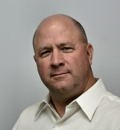 Cam Ford
Cam Ford
Camden excels at engaging with customers to consult on technology evolution, IT architecture, and business transformation. He joined Computex from Xsigo Systems, a high-profile Silicon Valley startup recently acquired by Oracle, where he ran Product Management and Solution Development for over 4 years. Camden spent 15 years in Silicon Valley leading product development, strategic planning, solution development, and new market development for industry leading companies including HP, Brocade, Intel, and Seagate, as well as a number of leading technology startups. Today he engages with enterprise level businesses on how to simplify their data center and infrastructures while planning for growth.
Session Title: Simplifying Datacenter Complexity: Doing Less with Less
Today’s datacenters are extraordinarily complex based on the natural evolution of both technology and the needs of the datacenter itself. This inherent complexity puts extraordinary demands on the IT staff to learn new technologies and understand how those technologies best interact with each other. At the same time, IT organizations are still viewed as cost centers and are under very tight budget control. IT staff must often diligently take on the task of learning new technologies on their own while simultaneously maintaining and operating with 99.999% uptime. The promise of “cloud” intimates that all problems will be solved in the “cloud”, but in reality, the cloud brings a whole new set of technical, operational, and security challenges. This session will discuss current technology and operational trends designed to help Simplify, Standardize, and Consolidate infrastructure to reduce demands on the IT staff and free them up to focus on managing the real value in the datacenter, the Application infrastructure that directly contributes to a business’s top and bottom line.
2) From Point A to Point B – Development and management processes accelerated by new transformational technologies.
 Chris Armstrong
Chris Armstrong
Mr. Chris Armstrong, President of Armstrong Process Group, Inc., is an internationally recognized thought leader in business and enterprise architecture, formal modeling, process improvement, systems and software engineering, requirements management, and agile development. Mr. Armstrong represents APG at The Open Group, the Object Management Group, and the Business Architecture Guild. Mr. Armstrong is leading the UML Profile for BIZBOK project, a co-chair of the TOGAF Certification Standing Committee (CSC) and EA Capability Improvement project, and is contributing to the next version of TOGAF, ArchiMate, and IT4IT. Mr. Armstrong is certified in TOGAF, ArchiMate, IT4IT, Open FAIR, UML, SysML, and is a Certified Business Architect (CBA).
Link to Presentation : Innovation Management and Enterprise Architecture
Many organizations are putting in place new Ideation or Innovation Management capabilities to exploit the human capital of their entire company. This is based on the concept that a well-performing, innovative company is one that is prepared to capture ideas about new products/offerings and operational improvements from all levels of the organization (CEO to shipping clerk). This presentation will review emerging best practices in Innovation Management and how to integrate it with Business and Enterprise Architecture.
 Grant Ecker
Grant Ecker
Grant Ecker joined Medtronic as the IT Director of Enterprise Architecture in Feb 2016 from Lowe’s Companies Inc, having previously managed Enterprise Architecture Governance for the home improvement retailer in North Carolina. Prior to his roles in EA, Grant has held various roles at Lowe’s and General Mills leading enterprise technology platform teams and large integration projects.
Grant is a Minnesota native who holds a B.S. in Computer Science from Washington University in Saint Louis and an MBA from the Carlson School of Management. He lives in Saint Paul with his wife Madolyn and 3 dogs.
Link to Presentation : Building and Maturing an Enterprise Architecture Practice
Architecture teams typically form in response to organizational demand to provide technology leadership on large enterprise scoped efforts supporting complex cross functional teams. The journey to mature typically lands in the formation of communities of practice that play an up front role in ensuring the company isn’t just doing things right, but also doing the right things across multiple topics of focus.
This session will tell this story – providing you with an opportunity to consider where your organization may be on their journey, and how you can effectively engage to add value at each point in this maturity curve.
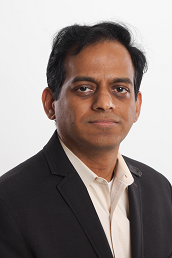 Sriram Sabesan
Sriram Sabesan
Sriram Sabesan leads the digital transformation practice at Conexiam. He guides Conexiam’s clients to mature their architectural thinking and succeed in their transformation journey. Making the good great and the best even better.
Sriram is an Open CA certified Distinguished Architect and member of the board of professional certification at IASA Global and the Open Group. Reflecting his decades of real-world excellence, he co-authored ‘The Seven Levers of Digital Transformation”, “Digital Practitioner Body of Knowledge”, “Digital Transformation: Strategy to Implementation using the Open Group Standards’, & TOGAF Body of Knowledge “Leader’s Guide”. “Practitioners’ Guide” and “Governor’s Guide”
Link to Presentation : Chess not Checkers – Architect your Transformation
This talk is about the 7 Levers of Digital Transformation, a peer-reviewed framework*. This framework, is a proven path to success that is backed by an architectural approach. An approach that provides a traceable and governable path to succeed in the transformation effort.
I will address the unfortunate perspective that architecture is about avoiding technical debt, service debt or culture debt; that it is just a huge upfront academic exercise that won’t be able to answer all questions.
I will be presenting evidence to exemplify that architecture approach is about doing just enough to understand where opportunities, threats, roadblocks, and uncertainty are. It’s about avoiding the debts that we ever have to pay for.
We will discuss how an agile and architecture mindset allows us to understand the structural constraints and opportunities in our ecosystem and operations; enables enterprise agility; supports scaling and evolving at a rate faster than the competition.
This presentation will reveal our universal scaffolding used with Saudi technology startups, 115-year-old market leaders, and global mega corporations.
* – The Open group deemed the 7 levers whitepaper as a definitive guide for architects, transformation sponsors and the solution delivery team. The Open Group is the global architecture and technology standards body, comprising of over 600 organizations across Fortune 500 companies and public sector.
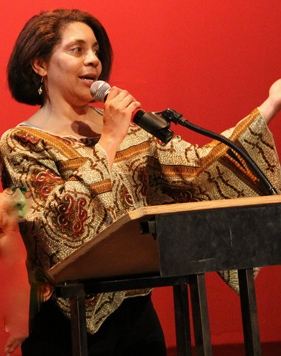 Ellena Schoop
Ellena Schoop
Ellena Schoop (Scope), Enterprise Data Architect and Sr. Data Governance for the State of Minnesota MNIT Services, has over 25 years of experience in leadership roles in public and private sector. She works with technology and business leaders in Data Governance and Data Management, including, data security/privacy, integration, BI reporting, design, and data migration strategies. Ellena has also implemented data governance and data stewardship programs and processes throughout her career. She has delivered on large projects and received several leadership awards. Ellena previously presented work at DAMA-MN., IT Government Symposiums, Digital Summit, and more. She has also contributed to several white papers published by National Chief Information Officers (NASCIO), data management.
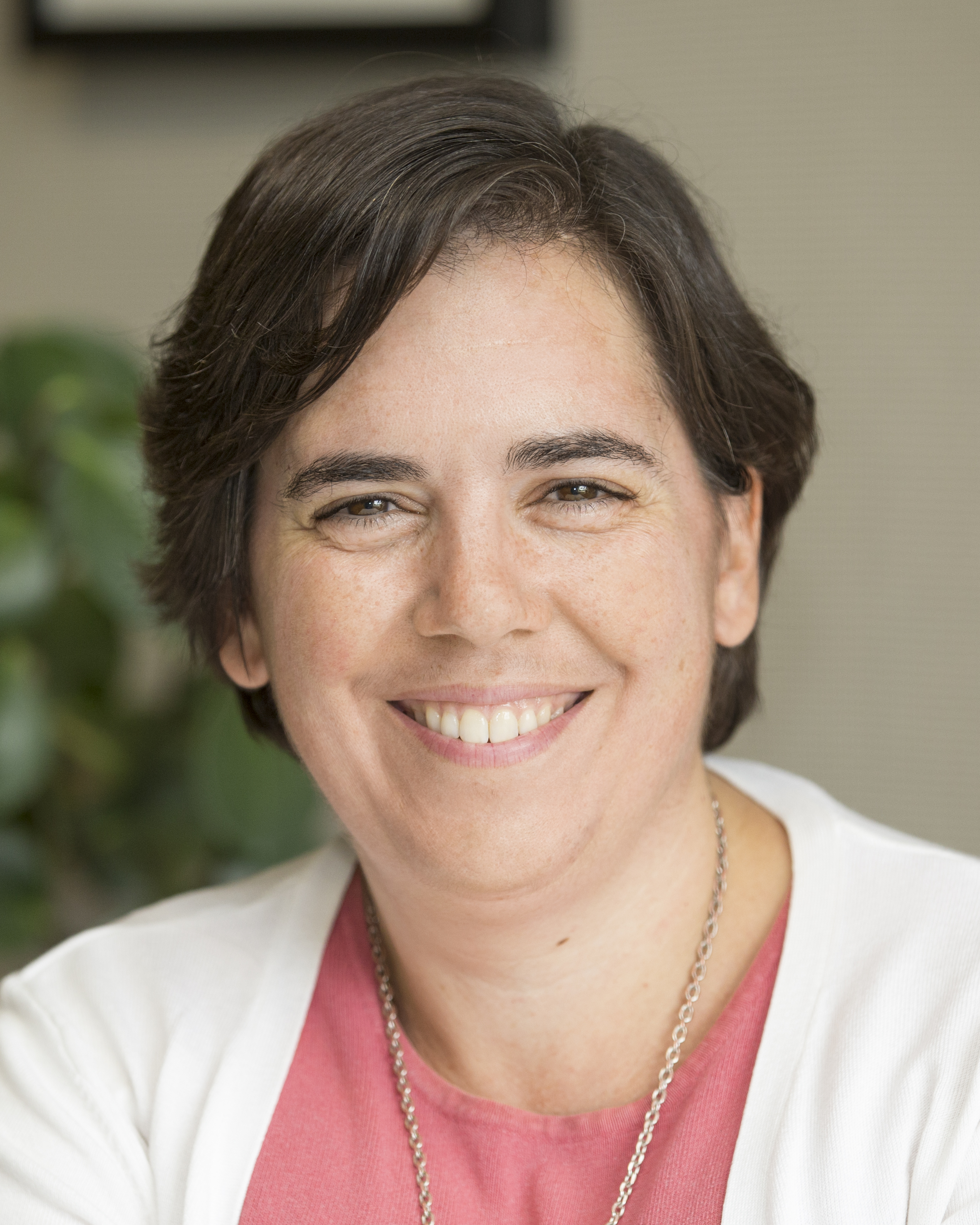 Jennie Delisi
Jennie Delisi
Jennie Delisi is the Accessibility Analyst in the State of Minnesota’s Office of Accessibility. She’s a Certified Professional in Web Accessibility (CPWA), and has a background working with individuals that use assistive technology. She speaks locally and nationally about digital accessibility, and is a member of the International Association of Accessibility Professionals’ Competencies Development and Recommendation Committee.
Session Title: Inclusion as a Positive Disruptor
Forces of culture change include: “silver tsunami,” people living longer, and individuals with disabilities actively engaging in digital technology and communities. Architecture processes must efficiently adjust to the new culture of AI, system modernization, and mobile, and adopt strategies for flexible systems that encourage collaboration, innovation, and are accessible. Presenters will discuss work being done by the State of Minnesota’s IT Department, in partnership with agencies, to lay the groundwork for access to our systems, websites and documents for both of our customer groups: Minnesota state employees and citizens of all ages and abilities.
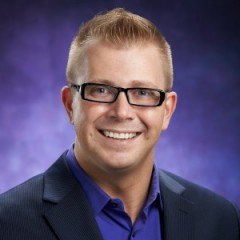 John B Fraser
John B Fraser
John is President of Core, a consultancy focused on optimizing digital processes.
Recruited at age 16, he produced vision guided robotics and inspection algorithms for top companies such as Seagate, Western Digital, Samsung, and IBM. Tired of the lab, John entered the financial services market to design and implement the first e-signature solution for a top 5 North American bank supporting millions of signatures weekly.
Now, as a consultant, he has accelerated 100+ digital transformation for top banks in Canada, 6 of the top 10 banks in the United States and dozens of credit unions, smaller banks and healthcare companies.
Link to Presentation : Tips to make your next digital transformation easy
In today’s world of integrated technologies, the days of “life and replace” are over. Changing a process, platform or even a vendor software version can mean a simple 6 figure project on the surface turns into a 7 or 8 figure project in a hurry. But it doesn’t have to be that way.
In this session we’ll discover hard earned lessons gathered implementing projects and architectures across North America. All Enterprise architects and technology leaders can expect to come away with at least tip to take into their current or next project that makes lift and replace a possibility again.
3) What’s the Value of Data – AI, Machine Learning and other technologies used to gain the most value from your data.
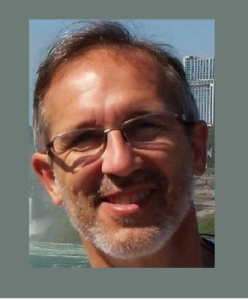 Joe Roushar
Joe Roushar
Joe Roushar is a polyglot architect and entrepreneur, working to bring advanced technology, people and language together for more meaningful automated solutions. A committed family man, Christian, outdoorsman and musician, Joe is living in Philadelphia where his company, Epacca is based, and serving as Enterprise Architect for Sompo International. His greatest skill is the ability to empathize with people of all backgrounds, and understand their perspectives and needs, and deliver fitting intelligent technologies.
Link to Presentation : Combining Natural Language, Machine Learning and AI to Deliver Meaningful Solutions Quickly
AI’s biggest inroads seem to be in Marketing – understanding consumers by analyzing their behaviors, and in Communicating – using chatbots to interact with consumers to reduce human effort in responding to web and telephone inquiries. Understanding the meaning and INTENT of what is spoken and written is important for these and other information management activities. Modeling INTENT means understanding meaning expressed in natural language words, phrases and sentences. This presentation is about using Natural Language Understanding software as part of solutions to determine INTENT, define INTENT models, and use them to reduce human brainwork for many automated activities.
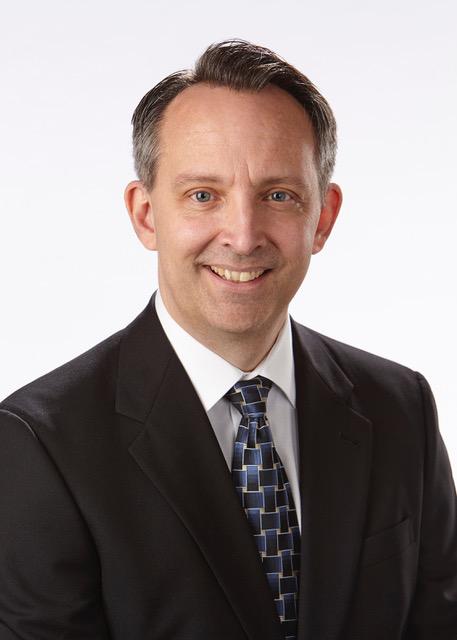 David Williams
David Williams
Mr. Williams has extensive experience in innovation spanning emerging technology and organizational development. He was a Strategy Advisor with Microsoft Corporation working with corporations on their competitive strategies and development of new business models. Recently, he spent two years at the University of Minnesota studying the development of innovation ecosystems and working with corporate advisory boards developing innovation practices. Currently he is Chief Innovation Officer at Elements Group, a management-advisory firm, actively working with organizations on strategic direction, ecosystem alignment and decision-support initiatives.
 Lana Weber
Lana Weber
Ms. Weber has a deep knowledge of global strategy, business architecture, and partnerships. She has led high impact teams at a number of growing mid-size and Fortune 500 companies, including UnitedHealth Group, Medtronic, as well as Cushman & Wakefield| NorthMarq. Ms. Weber brings to the discussion years of experience in global growth initiatives, mergers and acquisitions, governance, risk leadership, and organizational development. She serves as Chief Strategy Officer at Elements Group, a management-advisory firm, actively working with organizations on strategic direction, ecosystem alignment and decision-support initiatives.
Link to Presentation : The Exponential Impact of the Four Faces of Architecture
David Williams and Lana Weber deliver a compelling presentation on the four faces of architecture. They will identify how IT leaders can transform enterprise architecture into a strategic asset to the organization by using key data to integrate relationships with business executives, business architecture teams, project management office and development groups. Specifically, they will explore the critical nature of strategic decision-support capabilities that can be developed to support the increased speed of business and innovation across the organization.
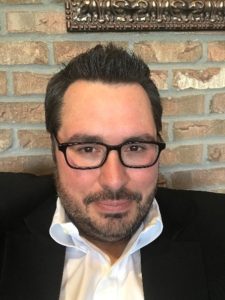 Daniel Yarmoluk
Daniel Yarmoluk
Dan Yarmoluk is the business and market development lead for ATEK’s IoT products which include TankScan and AssetScan. Dan has been involved in analytics, embedded design and components of mobile products with 20 years’ experience with a focus on creating and driving IoT automation, condition monitoring and predictive maintenance programs with technology with how analytics and business models intersect to drive added value and digital transformation. Industries served include: oil and gas, refining, chemical, precision agriculture, food, pulp and paper, mining, transportation, filtration, field services and distribution. He publishes his thoughts frequently and has a popular “All Things Data” Dr. Manjeet Rege, all of which can be found at www.vertiai.com.
Dan is an adjunct faculty at University of St. Thomas in the Graduate Programs in Software Engineering (Data Science). He has an MBA and a Graduate Degree in Data Science. He has two forthcoming books — one Industrial IoT as well as a second book on Blockchain Use Cases to be published in late Fall 2018.
Link to Presentation : From Technology to Value: Connecting the dots between A.I., Data Science and the Customer Experience
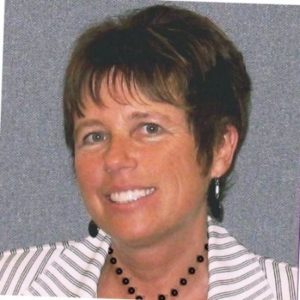 Marina Kerbel
Marina Kerbel
Marina is the Principal at UpOnData and an Enterprise Architecture Consultant. She has a Master’s Degree in Mathematics and Computer Science and has been fortunate to work in many roles throughout her career – from highly technical to executive. Marina’s experience includes establishing enterprise information architecture practices, leading large-scale transformational programs, and building cross-functional teams, with deep technical roots as a certified DBA, developer and architect. She is currently focused on Enterprise Information Strategies, Advanced Analytics, IoT, Security and Cloud.
 Jote Taddese
Jote Taddese
Jote is a Senior Enterprise Information Architect and a Distinguished IT Advisor at Medtronic. He has a Master’s Degree in Software Engineering with over 20 years of experience in the Information Technology field leading major IT initiatives in government and corporate sectors. Jote is currently a leader for Medtronic’s Enterprise Information Management (EIM) strategy which is to establish common data, information management and analytics services to serve as the foundation for Medtronic’s business growth, insights, efficient operations as well as healthcare solutions & services. Jote is also a strategic advisor on Medtronic’s Global Health Innovation programs for Emerging Markets.
Link to Presentation : Data and Analytics – Revolution or Evolution?
“Imagine a World where Information provides actionable insights to Predict, Detect and Prevent the
occurrences of major illnesses and Save Lives”…it may be closer than we all think. Advanced data management capabilities enabled by intelligent automations and platforms that serve as marketplaces for
algorithmic business exchange are already challenging traditional business models. However, Data is fundamentally not a new phenomenal but how we view it and manage it has dramatically changed once its value has been realized. This session will discuss how new skills and creative approaches must be brought to bear to unlock the economic value of data in order to provide the maximum benefit to society as a whole.
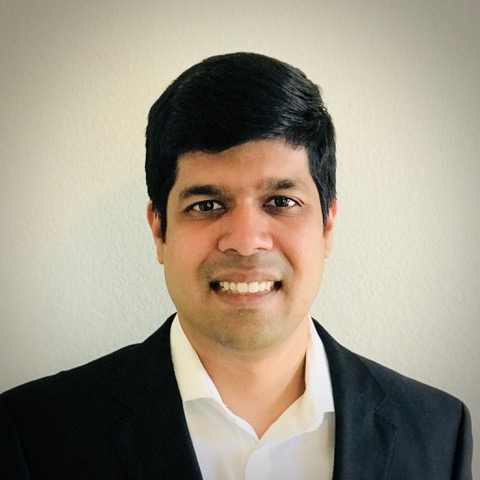 Dinesh A. Joshi
Dinesh A. Joshi
Dinesh A. Joshi has been a professional Software Engineer for over a decade building highly scalable realtime Web Services and Distributed Streaming Data Processing Architectures serving over 1 billion devices. Dinesh is an active contributor to the Apache Cassandra codebase. He has a Masters degree in Computer Science (Distributed Systems & Databases) from Georgia Tech, Atlanta, USA.
Link to Presentation : Two years in the making: What’s new with Apache Cassandra 4.0?
At almost two years in the making Apache Cassandra 4.0 is almost here. With a focus on performance and stability, it is full of interesting features. This talk takes you through a tour of the new features and performance improvements. From Zero Copy Faster Streaming support to Virtual Tables and Audit Logging, learn how Apache Cassandra 4.0 has departed from previous major releases to be focused on the features required by the most demanding users. Attendees will not only gain an understanding of new features in Apache Cassandra, but understand what drove their creation and therefore have a better idea of how to best use these features in their own systems.
4) Technical Innovation – Cloud, Micro and Nano service, API’s and other technologies that can transform your enterprise.
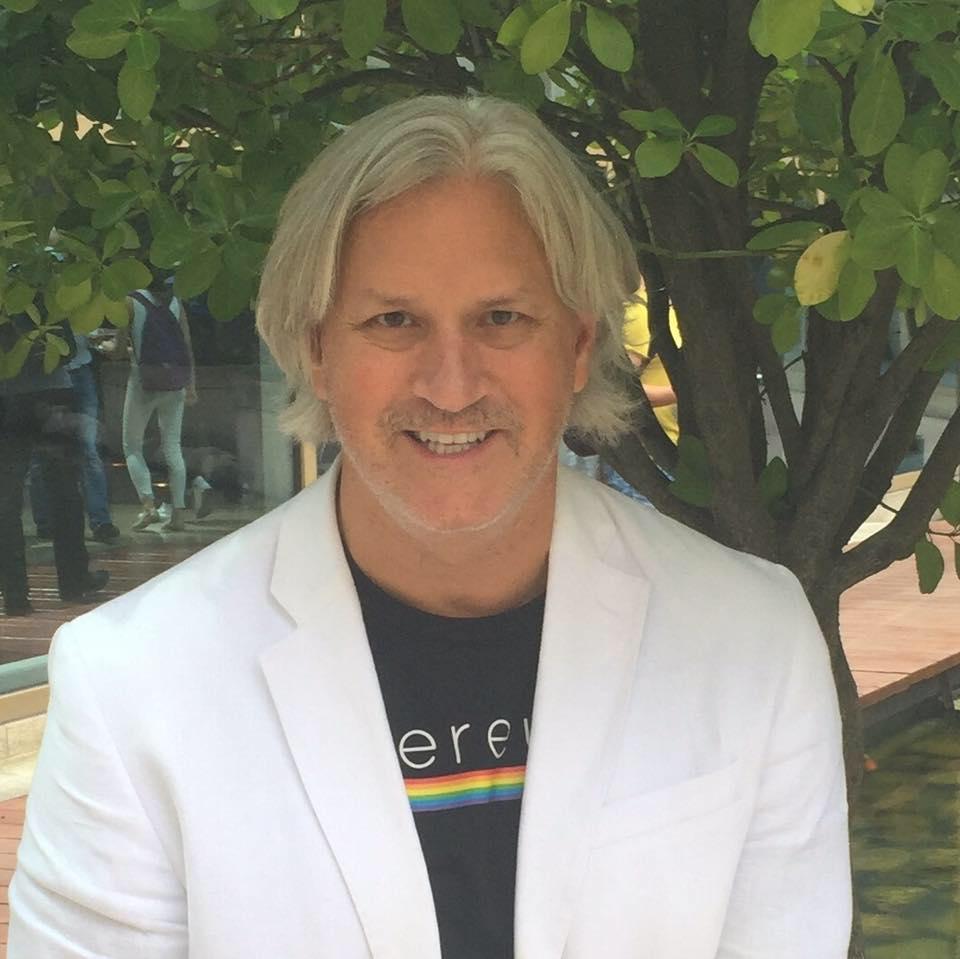 PJ Johnson
PJ Johnson
PJ Johnson is a Principal Architect at Microsoft focusing on business and technology strategy, risk management, and architecture. His expertise includes blockchain, cloud architecture, security, business intelligence and data sciences, and Mr. Johnson has worked extensively in M&A and exit strategies, new value realization, strategic IT management and IT rationalization across many domains. His work with blockchain includes architecture design sessions, strategy briefings, and proof-of-concepts across industries such as healthcare, banking, retail, manufacturing, and insurance among others. While his career at Microsoft is approaching 19 years, Mr. Johnson has been in the IT industry in many capacities since the 1980s.
Link to Presentation : Demystifying Blockchain – Application in the real world
Blockchain – is it real, relevant, and robust? Is blockchain differentiated in the value it brings? To understand blockchain, it’s necessary to move beyond the buzzword and develop insight as to what distributed ledger technology enables in digital transformation. Please join this presentation to learn how blockchain is practically being applied in real-world problems, what challenges exist in broadening its adoption, and candid conversation on how businesses are starting their blockchain journeys and best practices to achieve success.
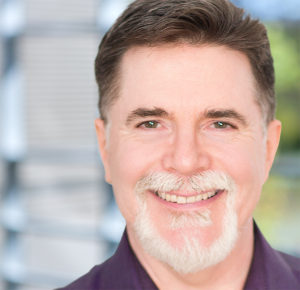 Charles Betz
Charles Betz
Charles Betz is a principal analyst at Forrester Research, and is currently the global DevOps lead serving Infrastructure & Operations Professionals. In this role, he covers continuous delivery, release automation, and changing IT operating models. He also covers enterprise service management and digital operational excellence, including topics such as service portfolio management, service catalog, IT asset management, application discovery and dependency mapping, knowledge management, configuration management, and CMDB as well as relevant industry standards. Charlie has held architect positions at Wells Fargo, Target, Best Buy, and AT&T, and also teaches as adjunct faculty at the University of St. Thomas. He has recently published a textbook, Managing Digital: Concepts and Practices through The Open Group Press and is working to adapt that textbook into a new international Digital Practitioner Body of Knowledge.
Link to Presentation : The ESM and DevOps tools markets –
The results of not one but two new Forrester Waves will be presented: Enterprise Service Management (ESM) and Continuous Delivery and Release Automation (CDRA). Enterprise Service Management is the logical outgrowth of IT Service Management, bringing service management principles to corporate areas such as facilities, HR, legal, and others. Continuous Delivery and Release Automation is the automated aspect of DevOps, the efficient toolchain spanning idea to source code to package to deployed services. Both areas will be discussed in detail, including scope, capabilities, and high level reference architecture. The official Forrester wave scoring of vendors (12 in ESM, 15 in CDRA) will be presented, and the relationship between the two areas will be discussed with reference to the IT4IT standard.
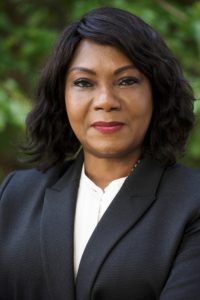 Ellen Crayton
Ellen Crayton
Ellen Crayton is a strategic leader and subject matter expert on IT Modernization, Cloud and Innovation. She currently provides C – Level IT advisory for a Federal agency in Washington, DC. She has led enterprise level IT strategic initiatives for the public and private sectors covering health care, finance and ecommerce for clients at the Gauteng Shared Service Centre (GSSC) in Johannesburg, South Africa, Dow Jones Markets, New York, Ernst & Young, New York, NYNEX Meridian Systems, New York, the City of New York Office of the Mayor and currently, the US Federal Food & Drug Administration.
Link to Presentation : A Roadmap for IT Modernization in US Federal Government
REDEFINING LIFE SCIENCES AND HEALTHCARE THROUGH INNOVATION & DIGITALIZATION
The Client: Federal Life Sciences Agency and Commercial Stakeholders
Presenting a Case of Innovation in Life Sciences for Better, Longer Living. An interplay with technology best practices, architecture principles, and the “people, process, technology”; and compliance paradigm. I will present essential points of IT market enablers and leaders in the public sector’s IT consolidation, modernization and innovation journey; that is, from bare metal servers, Hyper Converged Infrastructure (HCI), Virtualization, Software Defined Network (SDN), Software Defined Data Center (SDDC), Virtual Desktop Infrastructure (VDI), cloud capabilities, disaster recovery, and related technologies required for robust security, service delivery excellence and innovation.
 Sriram Sabesan
Sriram Sabesan
Sriram Sabesan is a principal architect with more than 20 years of experience leading and delivering technology solutions, solution architecture and enterprise architecture. He serves in the certification boards of IASA Global and the Open Group.
Sriram is currently focused on multi-cloud strategy and migration to XaaS models. His oversight includes architecting the integrations across multiple services related to financial controls, enterprise and consumer identity management, and workflow coordination across multiple solutions.
Sriram is a mentor and instructor for the T-Mobile’s architect certification program, speaks regularly at industry events.
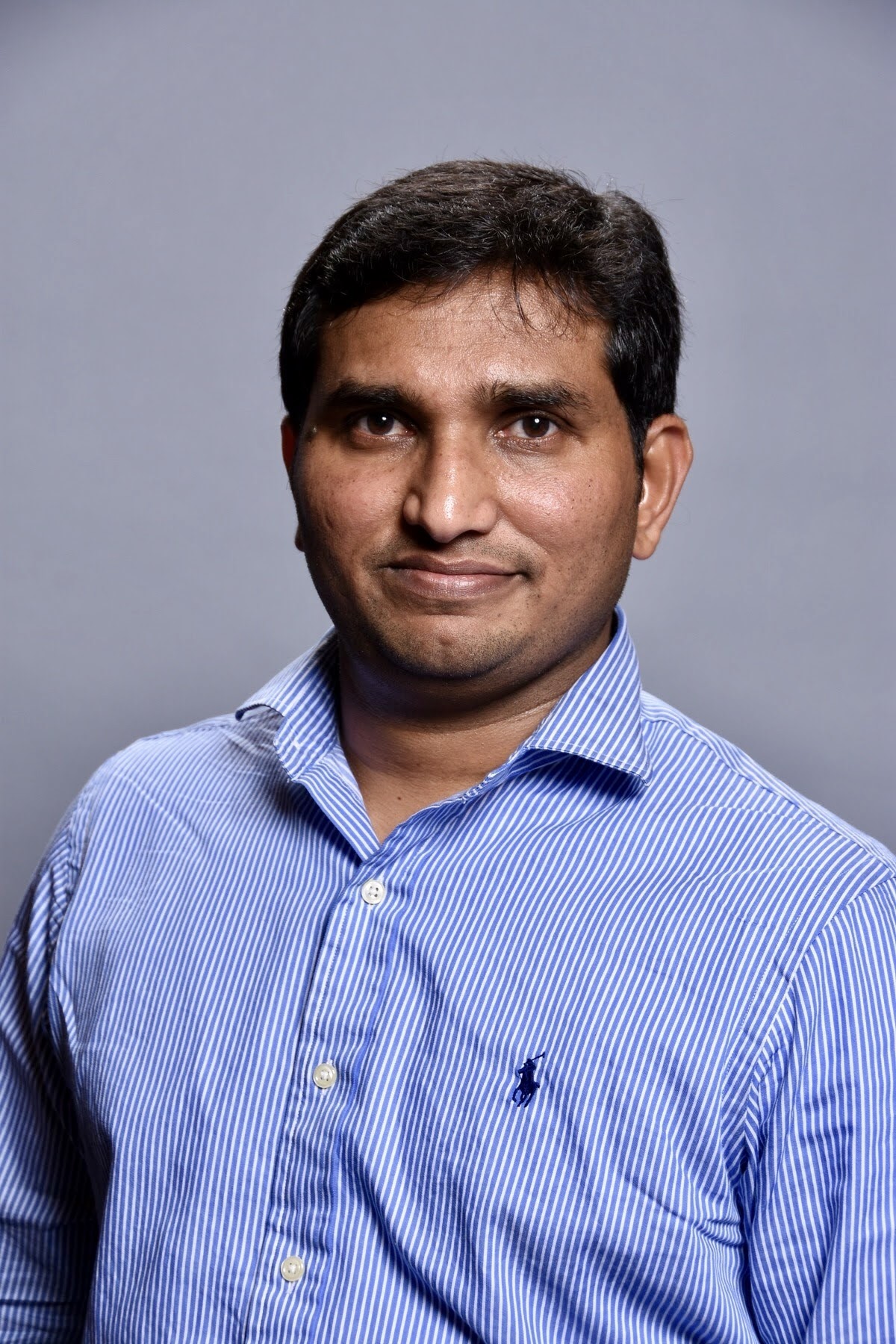 Suresh Annamreddy
Suresh Annamreddy
Suresh Annamreddy with 17+ years of experience in Design, Development and Delivery of technology solutions.
Suresh leads the digital transformation initiative for the human capital experience area of T-Mobile, leveraging Pivotal & AWS stack, microservices for integrating across multiple SaaS solutions, including IoT deployment. He also oversees the development of analytics solutions that empowers regional business leaders.
Suresh is a Certified IT Architect (CITA-F) and he mentors engineers and analysts pursuing IT architect career path.
Link to Presentation : Maximizing productivity via SaaS Integrations
Digital transformation is pivoted around the concepts like end user experience, productivity improvement (avoidance of duplicate work), decision continuity and governance. Use of multiple SaaS solutions and other managed services throw challenges to address these concerns.
Proliferation of disparate SaaS solutions, with very few offering native cloud services integrations, the task of providing evidence of a synthetic view of transaction and compliance with all the regulatory needs is becoming complex. Issues as routine and simple as onboarding, promotions, and conversion of knowledge workforce leave a trail of back office operations that could surface fractures in the ecosystem. Identity management, and planned outage changes the behavior of the landscape to support continuous operations and compliance.
In this talk we will discuss how T-Mobile is balancing its cloud strategy, internal innovation and evolving compliance needs via microservices, data hub, federated identity and continuous monitoring to deliver value to the business while addressing key data management issues.
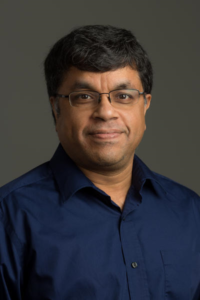 E.G.Nadhan
E.G.Nadhan
E.G.Nadhan is Chief Technology Strategist for the Central Region at Red Hat. He provides thought leadership on various concepts including Cloud, Big Data, Analytics and the Internet of Things (IoT) through multiple channels including industry conferences, Executive Round tables as well as customer specific Executive Briefing sessions. With 25+ years of experience in the IT industry selling, delivering and managing enterprise solutions for global corporations, he works with the executive leadership of enterprises to innovatively drive Digital Transformation with a healthy blend of emerging solutions and a DevOps mindset.
Link to Presentation : Accelerating collaboration to architect continuous innovation
The fundamental need to architect, design, deploy and monitor applications has not really changed. But, what has changed is the speed at which it is done and the ability to be lock, step and ahead of the change that is happening in the digital world through innovative technologies. Open collaboration and purposeful innovation is no longer a choice but something that must be an integral part of all phases. This session outlines specific steps that can be taken across the life cycle to architect an ecosystem that fuels the art of continuous innovation.
5) Trust in the Digital Age – Identity, privacy and security and how they are impacted in the new age of digital trust.
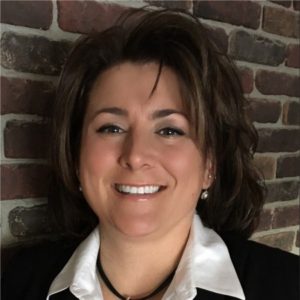 Kathy Washenberger
Kathy Washenberger
Kathy Washenberger is the Chief Information Officer of FocusPoint Technologies. She is a cyber security technologist at heart and has a 20-year track record of leveraging technology solutions to drive business value. Kathy has held roles as CISO and COO at multiple companies including both corporate and government entities. She is an IT expert who provides exceptional insight into what it takes for successful security programs and implementations. Adept at working with the business and organizations to meet business, IT, security, privacy and compliance goals while delivering consistent high-quality results. A professional that helps business bring clarity to cybersecurity challenges.
Link to Presentation : Securing the New Normal — SaaS, Cloud, IoT, IAM
As businesses continue to transform digitally, they must continually evaluate the risk and adjust accordingly to allow for their customers to continue to trust their data is protected. A comprehensive security program must include these high priority topics that are constantly coming up in the industry today: Cloud, SaaS and IoT Security, and Identity and Access Management. In this workshop, you will learn:
- How to identify exposure in these critical areas;
- Processes and technological capabilities to control the inherent risks; and
- Ways to demonstrate to business leaders, partners and customers that you are protected.
 Sorell Slaymaker
Sorell Slaymaker
Principle Consulting Analyst covering IP networking, security, and unified communications. Prior experience includes; Gartner research director and technical architect at UHG, Target, Travelers, and Cigna. Founding member of NANOG, which oversees the operations of the Internet, and part owner of firewall and routing companies, one of which was sold to Cisco.
Link to Presentation : Zero Trust Networking
Traditional network security architectures protect the perimeter, but once an attacker or malware gets inside the network; users, applications, services, and data are left vulnerable. With the acceleration of mobility, cloud, and IoT plus the ever-increasing security threats, enterprises can no longer trust anyone or anything. Given the increased network attack surface, the accelerating speed and sophistication of attacks and growing insider threats, every enterprise must begin moving to a Zero Trust Networking (ZTN) architecture. Zero trust enables enterprises to stop malicious traffic before it gets on the network.
 Jeremy Swenson
Jeremy Swenson
Mr. Swenson has worked or consulted at 10 organizations in 7 industries on progressively complex and difficult problems in business technology including: proj. mgmt., business analysis, data archival and governance, audit, web application launch and decommission, strategy, information security, data loss prevention and board governance. From governments, banks, insurance companies, minority-owned small businesses, marketing companies, technology companies, and healthcare companies, he has a wealth of abstract experience. Impressively, the results are double-digit risk reductions, corrected strategic decisions, vetted process improvements, improved security, executive accolades, and $25+ million on average or more in savings per project. Overall his work can be tied to nearly a billion dollars of savings. He is also a known writer/blogger and keynote speaker at the intersection of information security, process improvement, and disruptive creativity. He has an MBA from Saint’s University of MN and Master’s in Security Technologies from the University of MN. He is the CEO of Abstract Forward Consulting, an information security management consultancy.
Link to Presentation : Failing Forward to Bake Security Into Your Product Design
This session will start with a review of a couple of cases where security was not baked into a technology product and the real-world consequences that followed and the lessons learned. This session will then provide an overview of the software product design process with focus on how to resolve the conflicting requirements that drive clever functionality and profitability vs. long term security and accountability. It will discuss scenario mapping and how to imagine unimaginable use cases to mimic threat actors. It will provide guidance on how to test security design requirements via a hybrid agile methodology. It will review a few common security frameworks applied to the SDLC. It will also discuss how overly traditional conceptions of team formation and selection may be your worst enemy in terms of security and innovation – that also means being more inclusive in which different teams are involved in the product development process.
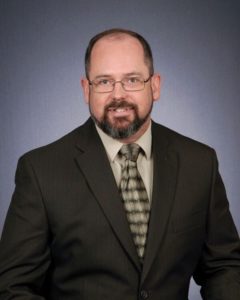 James H. (Jim) Morse, Jr.
James H. (Jim) Morse, Jr.
Jim Morse is currently a Lead Sales Engineer with CenturyLink’s Solutions With Advanced Technology (SWAT) team. A retired Army officer, he has held positions as staff engineer for the organizations responsible for voice & data communications for South West Asia and the Western Continental US. He holds an MA in Management & Leadership from Webster University, a Master’s Certificate-equivalent in Telecom Systems Engineering from the US Army Leader College for Information Technology, and a BS in Electrical Engineering from Iowa State University. He and his wife, Melanie, currently reside in Champlin, MN, with their dogs Boris and Tasha.
Link to Presentation : Architecting for Privacy in a Big Data Era
When considering privacy requirements for a system, it is standard to include what type of data is being collected, where & how it is stored, who should be allowed access, and how that access is to be enforced. Given the recent spate of spectacular data breaches (and the assumption that there are many more that go un- or under-reported) that is no longer enough. It is time to take the privacy architecture to the next level by assuming that some part of the system will be compromised and building in methods to limit the damage and generate alerts natively.
